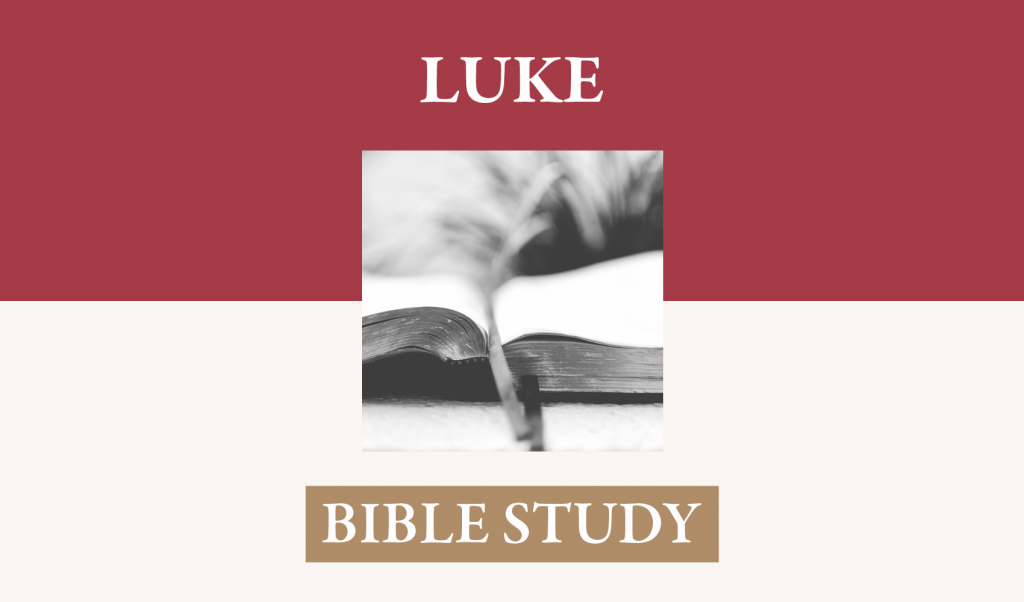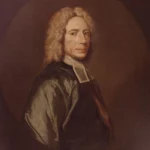Biblical Truth: Jesus’ birth as the Savior is good news everyone can celebrate.
Appreciate the Challenging Circumstances: Luke 2:4-7.
[4] Joseph also went up from Galilee, from the city of
[4] The attention narrows specifically to Joseph and Mary. The reference to their going up from
[5] Mary made the census trip with Joseph, despite her condition. The reference to Mary as engaged means that the marriage is not yet consummated and thus implies a virgin birth. Although the extent of her pregnancy is not given, her condition may suggest why she accompanied Joseph, since the birth of their child was near and she did not want to have the baby without Joseph being present.
[6-7] The birth of Jesus is told with simplicity. The setting presents a very humble beginning for the future messianic king. The birth itself is told briefly without any details as to why the couple stays in the stable. There is no account of a search for a place, an idea that erroneously leaves an impression that the couple find the last place in town. There is no speculation about a harsh innkeeper who cannot provide a room. Neither is there a suggestion that the parents are too poor. Rather, Mary’s time comes to give birth and the nearest inn was full; so she bears the child in a stable, wraps him up, and places him in what probably is an empty feed trough. The newly born child is wrapped in swaddling clothes. The custom was to take strips of clothes and bind them around the child to keep the limbs straight. Swaddling prepares us for the shepherds’ recognition of the child [2:12], as does the mention of manger. The child is laid in a manger, probably a feed trough normally used for animals, since that is the normal meaning of the term. The animal room that Joseph and Mary found may have been either a stable next to the place of lodging or a cave, since the use of caves for stables was common. Ancient tradition associates Jesus’ birth with a cave. A basilica was erected over a cave site in
The overruling providence of God appears in this simple fact. He orders things in heaven and earth. He turns the hearts of kings to do His will. He overruled the time when Augustus decreed the taxation. He directed the enforcement of the decree in such a way that Mary had to be in
Tell the Good News: Luke 2:8-12.
[8] In the same region there were some shepherds staying out in the fields and keeping watch over their flock by night. [9] And an angel of the Lord suddenly stood before them, and the glory of the Lord shone around them; and they were terribly frightened. [10] But the angel said to them, "Do not be afraid; for behold, I bring you good news of great joy which will be for all the people; [11] for today in the city of David there has been born for you a Savior, who is Christ the Lord. [12] This will be a sign for you: you will find a baby wrapped in cloths and lying in a manger." [NASU]
[8] Luke turns from the birth to its proclamation. The account shifts attention to shepherds who hear a heavenly announcement of Messiah’s coming. This is the third announcement passage in Luke 1-2 (the others are 1:5-25 and 1:26-38). The announcement is not just to a family member, but to people who represent all people. The verse reveals the setting of the proclamation. Shepherds are in the field at night watching over their flock. The shepherds kept night watches in turn and lived outdoors as they protected the sheep from robbers and wild animals. The shepherds picture the lowly and humble of society who respond to God’s message. Jesus’ birth is thus followed immediately by a proclamation to an everyday group: shepherds in a field.
[9] The heavenly announcement begins with the angel’s arrival. The structure of the announcement is in a standard sequence: appearance [9a], fear [9b], a “do not fear” announcement [10-11], and a sign [12]. A word of testimony comes from heaven with the arrival of an angel of the Lord. The angel is not named and is not to be confused with the Old Testament “angel of the Lord.” The term used to describe his arrival, suddenly stood before them, is a common Lucan term and is often used to describe angelic or supernatural appearances. With the messenger came the bright presence of the Lord’s glory surrounding the shepherds. Such glory will appear again at key points in Luke-Acts in association with Jesus [Luke 9:30-31; Acts 7:55]. Such a bright light in the midst of the evening would have been an impressive sight. Luke intends the reader to visualize the contrast. The response to this stirring divine sign was a natural one: great fear. Such fear is emphasized by Luke’s sentence structure: they were terribly frightened. It is like the fear that overcame both Zechariah and Mary when the angel came to them, and such fear gripped the disciples at the transfiguration. The encounter with the divine is initially startling and unsettling. With the angel’s coming and God’s bright presence, the announcement follows.
[10] The angel begins his announcement by calming the shepherds’ fear, as is common in such appearances. The initial encounter with God or His messenger frightens most who experience it, but the grace of God is such that this fear is quickly removed as an obstacle. God wishes to interact with His creation. The announcement itself contains two descriptions: good news and great joy. This combination of good news and joy is also found in the earlier announcement of John the Baptist’s birth in 1:14. Clearly the good that God is about to do should meet with great expectation and joy.
[11] The announcement is significant for three reasons. First, it explains that the reason the message is good news and a cause for great joy is that a messianic Savior is born. Second, Luke repeats the note of fulfillment [2:4] that the birth occurs in the city of
[12] Luke now presents a sign of the birth. As with the other angelic announcements in this infancy section, a sign comes with the announcement. What is amazing is not that the child is wrapped up, but who the child is and where he is. One hardly expects to find Messiah in an animal room. One would expect a palace. But the Messiah’s humble and common origins fit nicely with the task that he shall bear for all his people, including especially the humble, hungry and poor [1:50-53]. Messiah’s life will contain an unusual bookend for a king, since he was born in an animal room and will die with robbers.
Praise God for Sending the Savior: Luke 2:16-20.
[16] So they came in a hurry and found their way to Mary and Joseph, and the baby as He lay in the manger. [17] When they had seen this, they made known the statement which had been told them about this Child. [18] And all who heard it wondered at the things which were told them by the shepherds. [19] But Mary treasured all these things, pondering them in her heart.
[20] The shepherds went back, glorifying and praising God for all that they had heard and seen, just as had been told them. [NASU]
[16] The announcement sets off a chain reaction. First, the shepherds respond in faith and go to find the child [16]. They tell others what caused them to seek the child [17]. The shepherds’ response in faith and testimony is similar to Mary’s instant response to the word in 1:39. The shepherds’ reaction causes the audience to react to their testimony [18], which in turn leads to a response by Mary [19]. The shepherds move hastily to find the child. The haste fits nicely with the urgency of their decision to go. Mary is named first, probably because the narrative is focused on her throughout. What the shepherds see is exactly what the angel promised, a baby lying in a feed trough. The shepherds reflect a vibrant faith, where the sequence is God’s word, faith, and then testimony. When God’s word comes to pass, testimony should follow [17].
[17] When the shepherds had seen the sign of the baby in a feed trough, they made known all that the angel had said about the child. The audience for the testimony is unspecified, though 2:18 makes clear that it was more than the child’s family. Mary, Joseph, and others hear that this child shall be a Savior for them, Christ the Lord. The full understanding by people will come later. But, for now, to the voices of the angels is added the testimony of humans. What they see and hear, they report.
[18] The response of all who heard the testimony was wonder. This response of marvel or wonder occurs frequently in the infancy section. However, its presence need not suggest the presence of full faith. Rather, marveling reflects the surprise of those who encounter God’s act or revelation. Luke’s choice of terms in 2:18-19 contrasts this corporate response and Mary’s private response. But in 2:19 presents Mary in contrast to the hearers in 2:18, and the use of wondered to summarize the hearers’ response stands in contrast to treasured in 2:19 to describe Mary’s ongoing meditation. This contrast indicates that she reflected on the events in a way that the hearers did not. Luke is saying that the report was circulated and caused a stir, but it is not certain that he is saying the city responded concretely to the birth. The report tickles the crowd’s ears, but it may have missed their hearts. Jesus’ birth brings a variety of responses.
[19] In contrast to those of 2:18, Mary engaged in deep reflection on what was taking place. Pondering them in her heart indicates an ongoing contemplation of these events. In this context, it refers to a type of contemplation that attempts to put thoughts together into an understandable whole. Luke intends for the reader to identify with Mary’s response.
[20] The shepherds, having seen the sign, returned home. But they returned with their faith confirmed and deepened. All they had heard, they had also seen come to pass. This produced a sense of joy in them, they honored God with glory and praise. Glory can be offered in a variety of relationships, but here it refers to verbally giving honor to God for His acts. God’s message through the angels had come to pass, leading to praise for God’s work.
Questions for Discussion:
1. Compare the birth announcement to the Shepherds to those given to Zechariah and Mary. What differences do you see in the announcement to the Shepherds?
2. What is significant about the three key Christological terms: Savior, Christ, and Lord in verse 11? What is Luke telling us about the baby Jesus with these terms?
References:
Luke, Darrell Bock, Baker Books.
Gospel According to Luke, William Hendriksen, Baker Books.

















